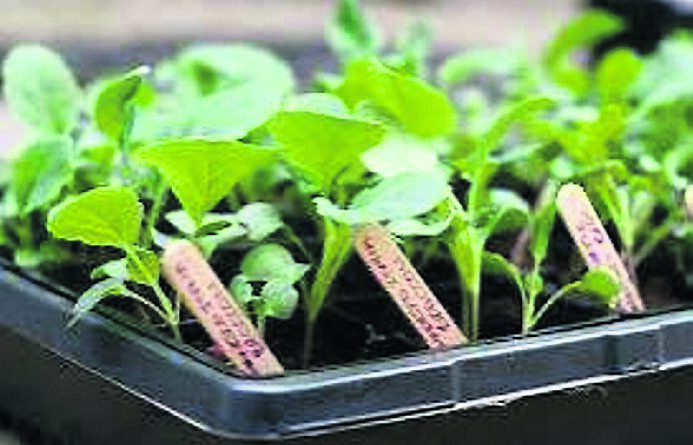In the garden: 10 steps to a better garden in 2025

Less mowing of the lawn means more wildflowers, with ox eye daisy, hawkbit and clover taking centre stage.
It’s the time of year for some armchair gardening, and hopefully we all have some nice new books to leaf through in these relaxing days before life gets back to normal.
1. Buying young vegetable transplants instead of trying to grow everything from seed myself: this cut down on a lot of work this year. When you’re only growing small amounts, then this makes sense.

It may not always be possible to get the exact varieties, or indeed the exact vegetables, but it does take a lot of the hard work out of raising seedling, pricking out, watering and monitoring seedlings.
It is also good to support local growers and I found farmers’ markets a good source of young plants this year past.
2. Growing only vegetables and fruit that I use sounds like a no-brainer, but it is so easy to get carried away with a seed catalogue in your hand, and those radishes look so delicious in the picture, when in reality I am not mad about radishes!
Making a wish list of vegetables to grow this year is a practical thing to do, and points to consider include, what vegetables do you use and like the most. What quantity do you use. How much space do you have. How much time do you have.
3. Planting more native trees if space allows is a great thing to do for the garden and the wider landscape. Hazel is a great tree for regeneration, it can be cut down to the base every year and it will produce lots of smaller stems which can be used as stakes and supports for the garden.
Other smaller native trees include holly, mountain ash, whitethorn, blackthorn, guelder rose and spindle tree.
4. Including more structure in the garden in the form of evergreen trees, shrubs and hedging, to create more cover during winter and also to provide foliage.
Now is a great time to plant hedging and while evergreen hedging may need to be purchased in pots, it may be possible to buy some bare rooted. Holly, yew and Portuguese laurel all make good evergreen hedges that provide structure, shelter and privacy in a garden setting.

5. Planting spring and summer flowering bulbs is a must every year to keep the colour and the spontaneity going. Get any spring-flowering bulbs into the ground before the festive break is over if they are not gone in already, and do some planning for summer colour possibilities.
Lilies and alliums are two great summer bulb fillers.
6. Pruning apple trees early in the year (just after Christmas) instead of just before they burst bud did help to take some pressure off last year.
Springtime is a busy one, when lists are long and tasks become many as the sap rises, so if some of these jobs can be ticked off the list earlier in the year, all the better.
The prunings can be chopped up and used as kindling, or alternatively, they can be put on a long-term compost heap or to form the start of a general compost heap, providing some aeration at the base of the heap.
7. Getting some cardboard down and mulch or seaweed on top before it becomes a priority in springtime can also help to alleviate pressure once temperatures begin to rise, and having plenty of compost/manure or seaweed available helps. This will suppress weeds and allow plenty of time for the surface mulch to be broken down further and assimilated into the topsoil.
Ideally, it will just need a light raking before any direct sowing or transplanting later next year.
8. Get the shed organised now while there is time. Sorting pots, sharpening and oiling tools and getting machines serviced will ensure a more enjoyable and stress-free growing season ahead.
9. Cutting down on mowing the lawn has been a gift over the last few years. The different flowering species emerging in the grass are observed, and insects visiting to collect nectar and pollen make it a busy spot instead of the sterile monocrop that it was - now it is buzzing with life.
It is important to cut the grass tight at the end of the summer and to remove the clippings as this takes the nitrogen out of the cycle, preventing the build up of fertility, which the grass will enjoy at the expense of the wildflowers.
10. Taking the time to sit back and enjoy the garden. Sometimes, we are so busy getting all of the jobs done, we forget to enjoy the space, this is probably the most important job of all.






 App?
App?





